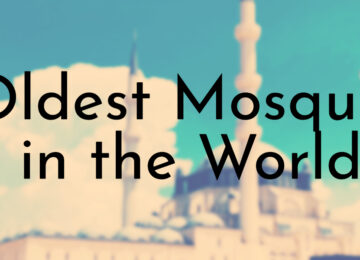Buddhist temples hold a profound significance in historical and archaeological society. There are a lot of incredible Buddhist temples in the world. Buddhism emerged around the 5th century BCE and yet has numerous temples that carry the legacy of the religion. Devotees from all around the world come to visit these temples in search of enlightenment and ultimate salvation.
So, here are the 10 oldest Buddhist temples in the world that had a long history before us.
10. Borobudur
Location: Java, Indonesia
Built: 8th-9th Century
Significance: Colossal temple complex with intricate carvings
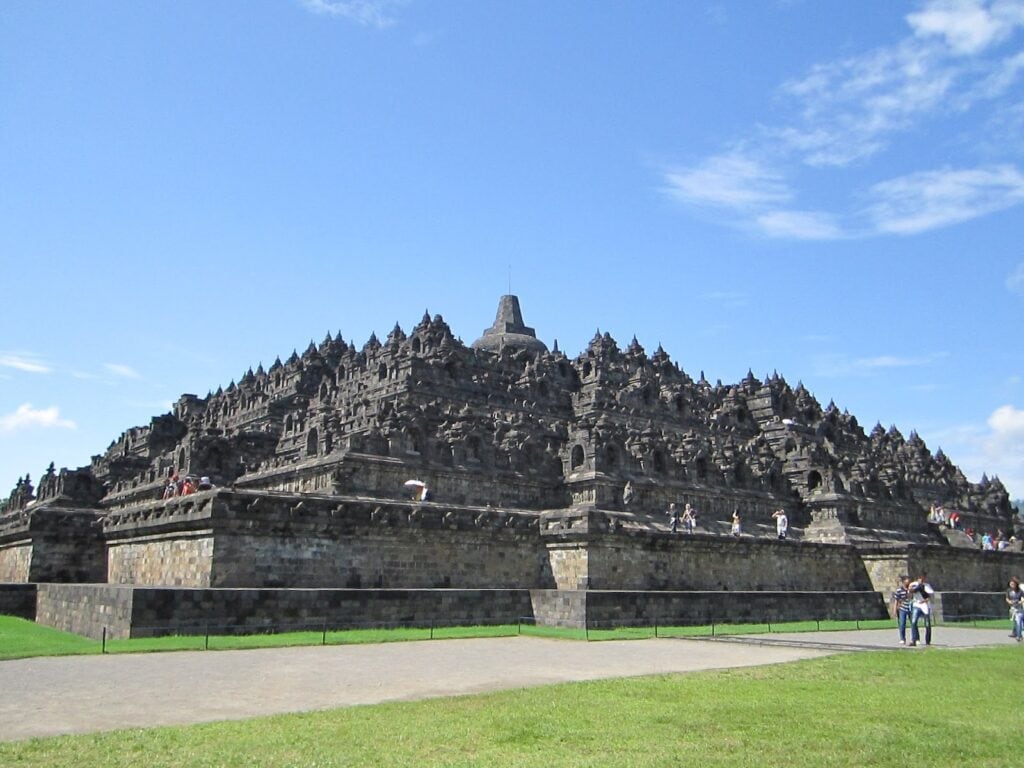
Borobudur is situated on the Indonesian island of Java. Built between the 8th and 9th centuries by the Sailendra dynasty, this colossal temple complex is known for over two million stone blocks meticulously assembled to create a spiritual masterpiece.
Borobudur’s intricate carvings and terraces narrate the journey from worldly existence to Nirvana.
Did you know?
Borobudur was abandoned and hidden by volcanic ash for centuries before its rediscovery.
9. Bagan
Location: Bagan, Myanmar
Built: 11th-13th Century
Significance: Thousands of Buddhist temples and pagodas
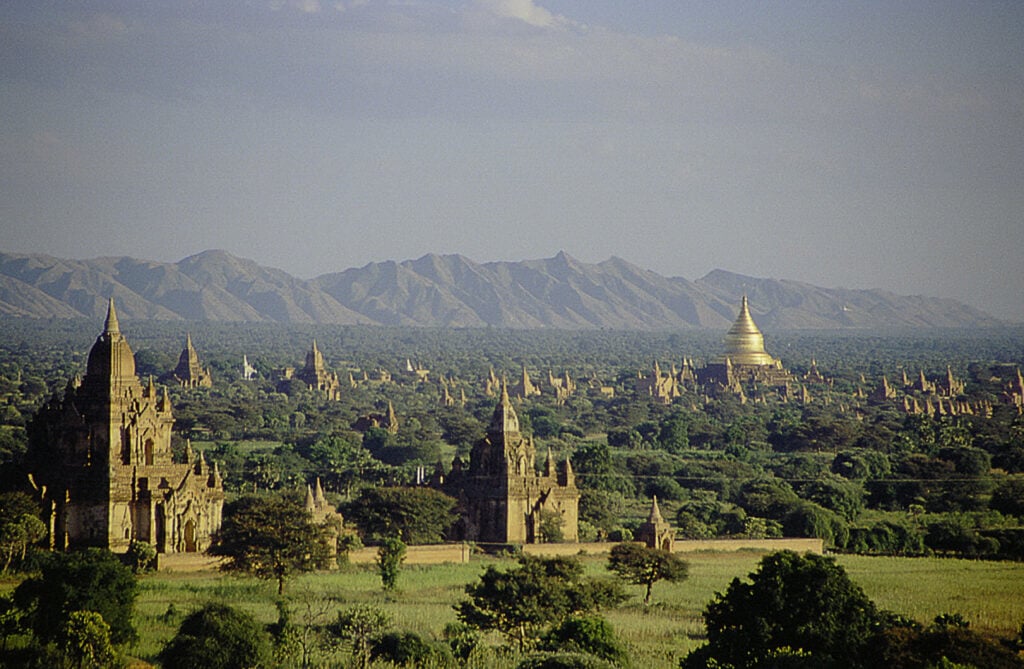
Myanmar has an ancient kingdom of Bagan, where thousands of Buddhist temples, pagodas, and stupas dot the landscape. During the 11th to 13th centuries, Bagan reached its zenith, with kings commissioning temples as acts of devotion and piety.
Political decline later led to the fall of the kingdom, but Bagan endured as a Buddhist scholarship and spirituality bastion. Today, its vast archaeological expanse serves as a testament to the enduring legacy of Buddhism in Myanmar.
Did you know?
Bagan is a UNESCO World Heritage Site and a popular destination for hot air balloon rides.
8. Wat Arun
Location: Bangkok, Thailand
Built: Dates Back Centuries
Significance: Represents sacred Mount Meru in Buddhist cosmology
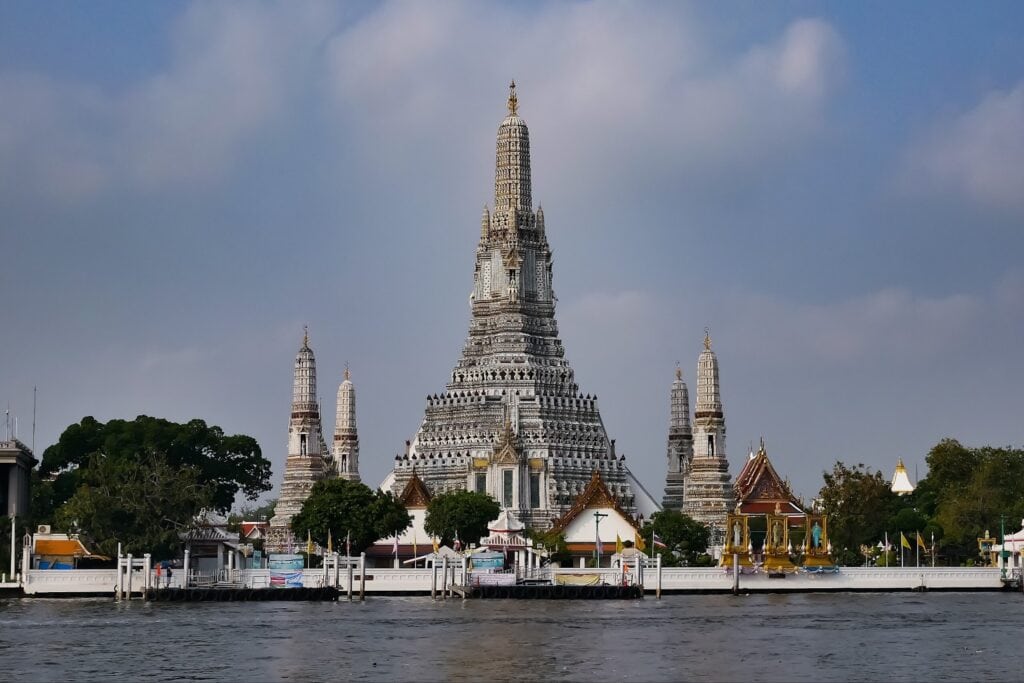
In Bangkok, Thailand, the ancient Wat Arun, or the Temple of Dawn, awaits our exploration. While the precise date of its construction remains elusive, this temple is a testament to Thai craftsmanship and spirituality. Its towering spires resemble the sacred
Mount Meru, of Buddhist cosmology, creates a mesmerizing silhouette against the evening sky. Contrary to its name, the best views of Wat Arun are unveiled as the sun sets, casting a warm glow upon it.
Did you know?
Wat Arun is a popular destination during the annual Songkran (Thai New Year) festival.
7. Boudhanath
Location: Kathmandu, Nepal
Built: 14th Century
Significance: One of the largest stupas in the world
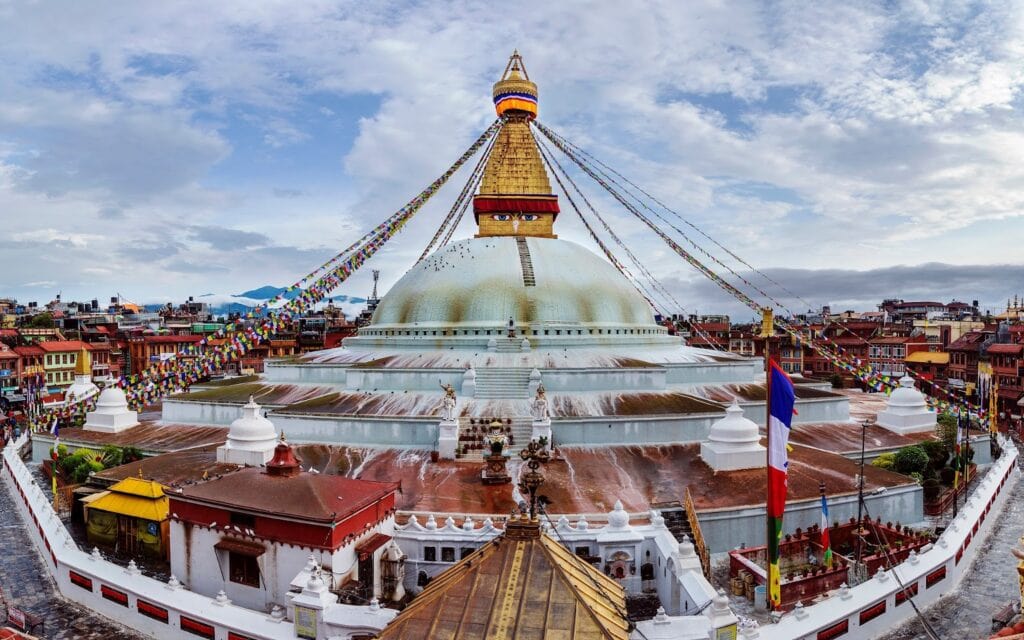
The magnificent Boudhanath stupa is situated in the suburb of Kathmandu, Nepal. This sacred structure, one of the largest stupas in the world, is a focal point of Tibetan Buddhism in Nepal. While the present stupa dates from the 14th century, its history is interwoven with tales of destruction and reconstruction.
Did you know?
It is renowned for the watchful “Buddha eyes” adorning all four sides of the stupa.
6. Shwedagon Pagoda
Location: Yangon, Myanmar
Built: 6th-10th Century
Significance: Holiest Buddhist shrine in Burma
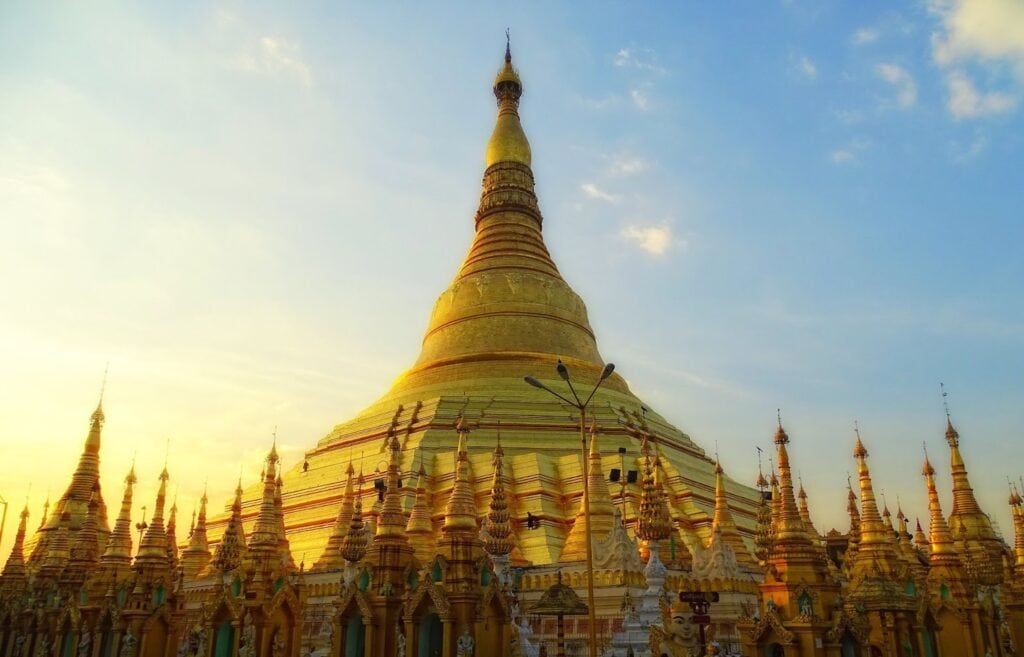
In the heart of Yangon, Myanmar, take pride in the Shwedagon Pagoda, also known as the Golden Pagoda. While the exact origins are unknown, it is believed to have been constructed between the 6th and 10th centuries.
The main stupa is 99 meters high and is entirely covered in gold, making it the holiest Buddhist shrine in Burma. The Shwedagon Pagoda represents the light of enlightenment for Buddhists.
Did you know?
The pagoda is said to enshrine strands of Buddha’s hair, making it a highly visited site.
5. Pha That Luang
Location: Vientiane, Laos
Built: 16th Century
Significance: Represents stages of Buddhist enlightenment
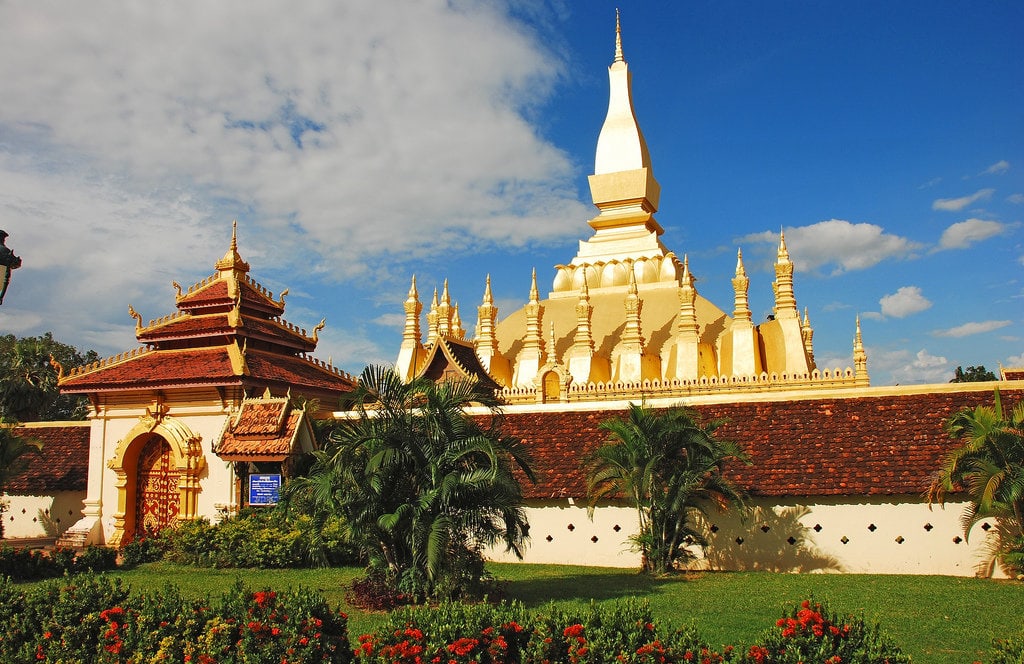
Vientiane, Laos, where the resplendent Pha That Luang, meaning “Great Stupa in Lao,” stands as an emblem of faith and resilience. Built in the 16th century on top of the ruins of an earlier Khmer temple, this stupa features multiple terraces, each representing a distinct stage of Buddhist enlightenment.
Did you know?
The golden spires of Pha That Luang reach for the heavens, symbolizing spiritual aspiration.
4. Todaiji Temple
Location: Nara, Japan
Built: 8th Century
Significance: Head temple of provincial Buddhist temples in Japan
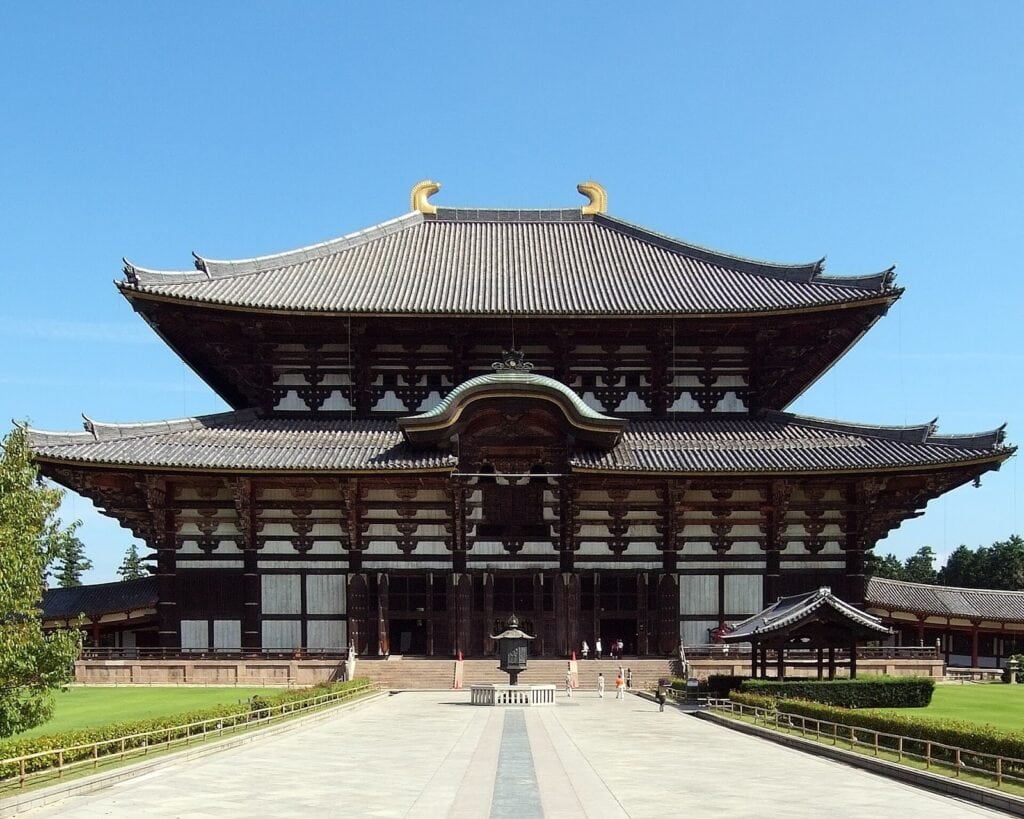
In Nara, we can find the Todaiji Temple or the “Great Eastern Temple.” Constructed in the 8th century by Emperor Shomu, this temple once served as the head temple of all provincial Buddhist temples in Japan.
The Daibutsuden, or Great Buddha Hall, within Todaiji, houses one of Japan’s most giant Buddha statues, a breathtaking embodiment of faith and artistry. Despite the passage of time and reconstruction, the Todaiji Temple remains a living testament to Japan’s profound Buddhist heritage.
Did you know?
The Great Buddha statue is a masterpiece of faith and artistry, standing over 15 meters tall.
3. Haeinsa Temple
Location: South Korea
Built: 802 (Rebuilt in the 19th century)
Significance: Home to the Tripitaka Koreana, a collection of Buddhist scriptures
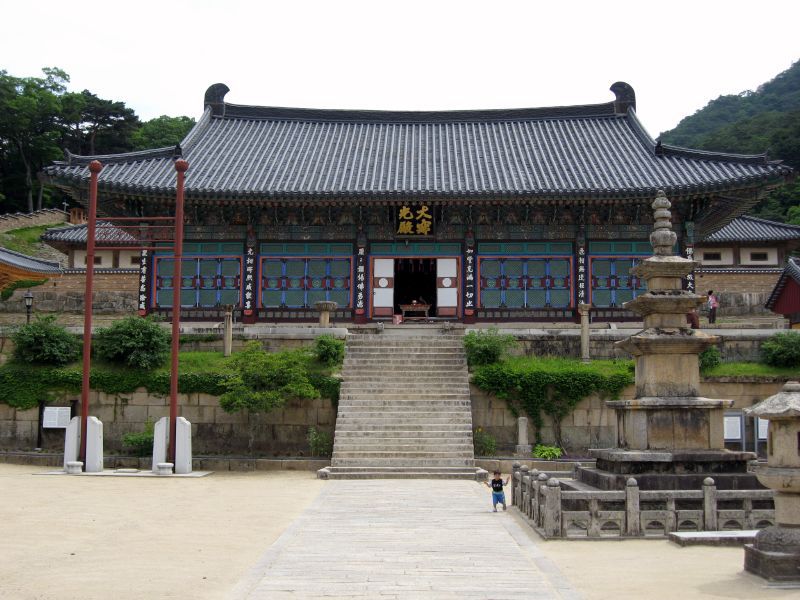
In South Korea, we encounter the Haeinsa Temple, a name that translates to the “Temple of Reflection on a Smooth Sea.” This venerable temple was first constructed in 802 and then painstakingly rebuilt in the 19th century following a devastating fire.
Haeinsa’s repository of wisdom makes it exceptional – the Tripitaka Koreana, a complete copy of Buddhist scriptures produced into 81,258 woodblocks. These priceless artifacts have weathered centuries and fires, safekeeping the spiritual heritage of Korea.
Did you know?
Haeinsa Temple is part of the UNESCO World Heritage Site “Historic Villages of Korea: Hahoe and Yangdong.”
2. Jokhang Temple
Location: Lhasa, Tibet
Built: 7th Century
Significance: Cornerstone of Tibetan Buddhism
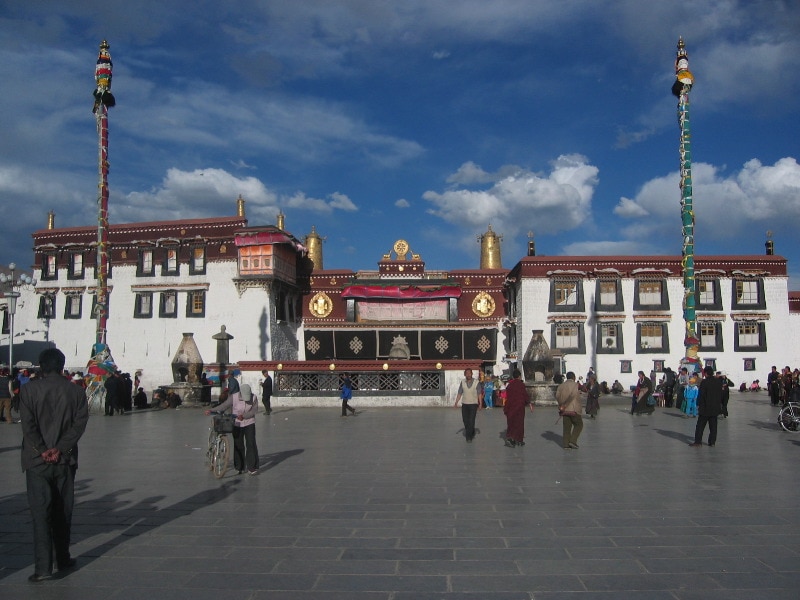
Tibet, where the Jokhang Temple graces the city of Lhasa. Built in the 7th century by King Songtsän Gampo, this temple is an architectural masterpiece and a cornerstone of Tibetan Buddhism.
Over the years, the Jokhang Temple has withstood invasions and the test of time, remaining a sacred destination for pilgrims worldwide. Its serene courtyards and intricate murals whisper tales of devotion and unwavering faith.
Did you know?
Jokhang is part of the UNESCO World Heritage Site of Historic Ensemble of the Potala Palace.
1. Mahabodhi Temple
Location: Bodh Gaya, India
Built: 5th-6th Century
Significance: Where Gautama Buddha attained enlightenment
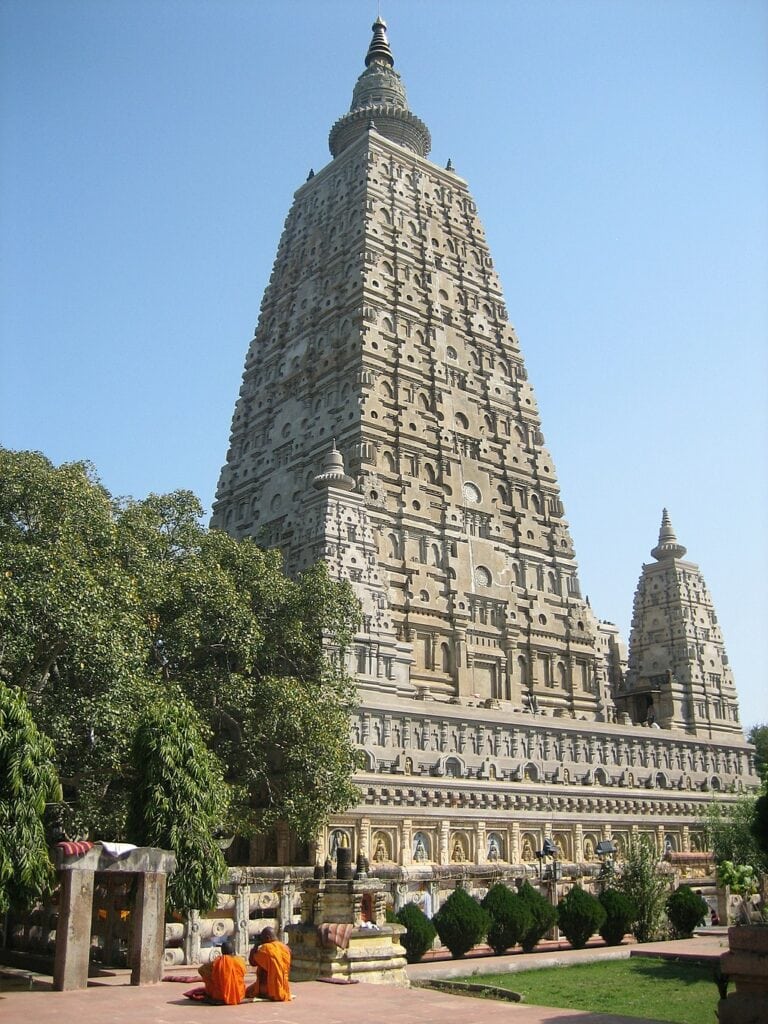
In Bodh Gaya, India, the Mahabodhi Temple stands tall as the oldest Buddhist temple in the world. Located at the very spot where Gautama Buddha is believed to have attained enlightenment under the Bodhi Tree, this temple is a pilgrimage site of immense importance.
Approximately 250 years after Buddha’s enlightenment, Emperor Asoka erected the original temple in the 5th and 6th century. The Mahabodhi Temple is a timeless tribute to the moment when the world witnessed the birth of Buddhism.
Did you know?
The Mahabodhi Temple is a UNESCO World Heritage Site.
Conclusion
Remember that these aren’t just buildings but living chapters of history. These temples stand as symbols of enlightenment, drawing millions of curious souls and devout pilgrims every year. Let’s celebrate their enduring legacy, preserving these cultural gems for generations.
So, explore, learn, and become part of their religious and historical journey.







